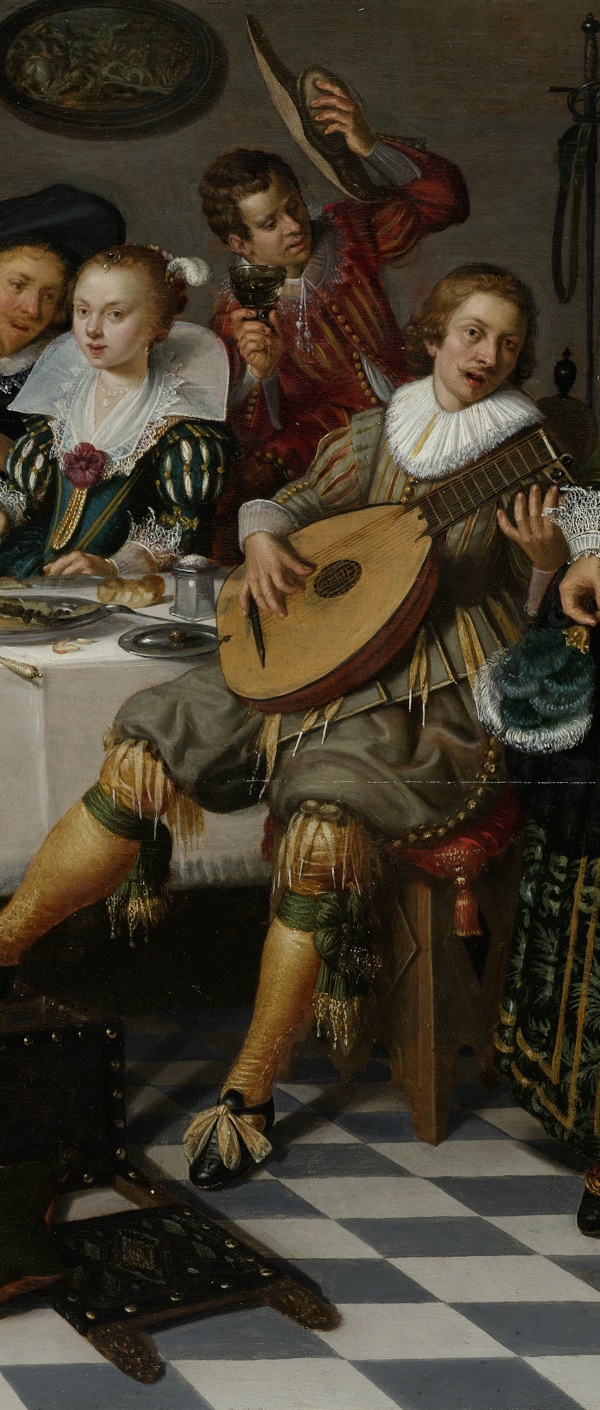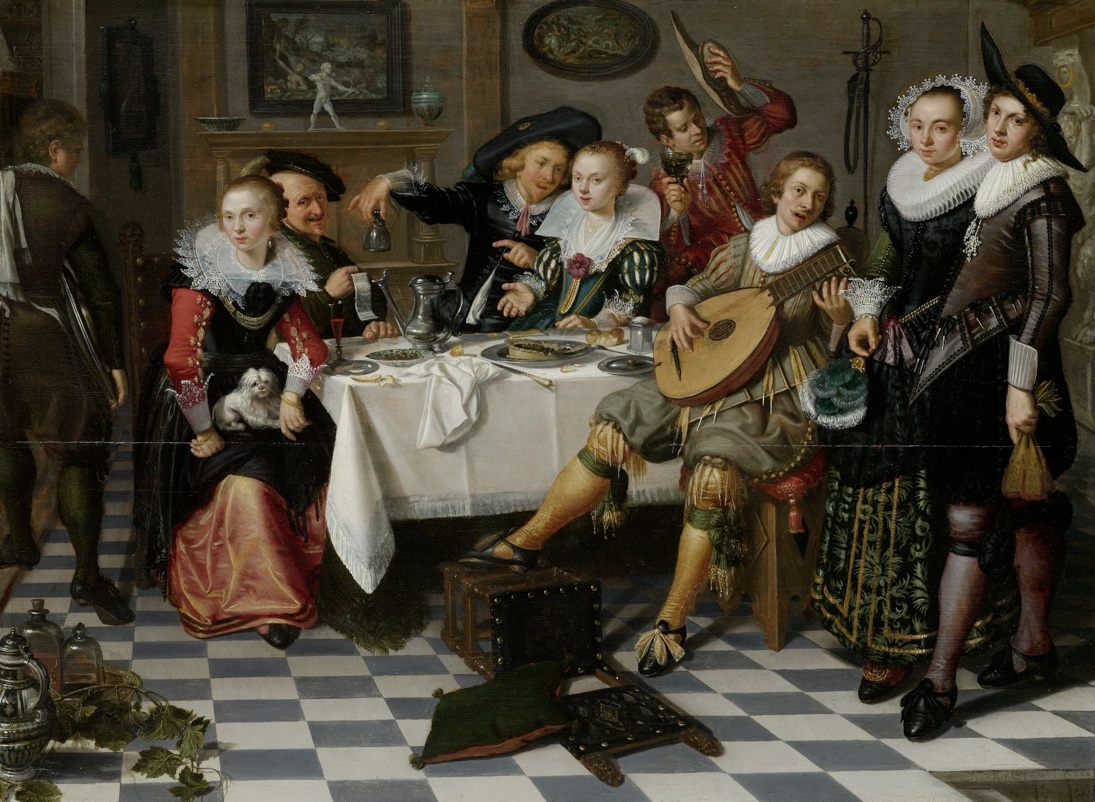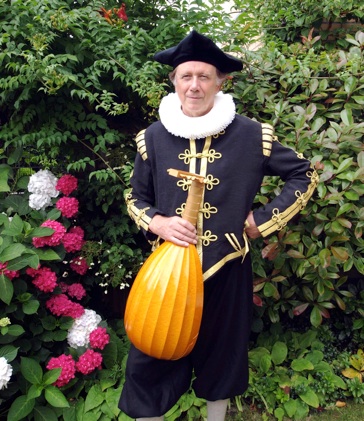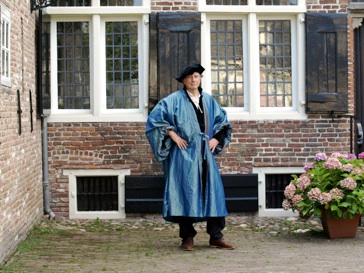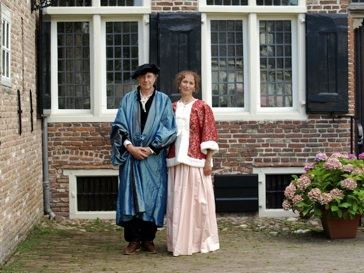Merry Company, Isaac Elias, 1629 RIJKSSTUDIO
The figures around the table allude to the Five Senses. The woman with the lapdog represents Smell; the man with the piece of paper is Sight; the singing couple are Touch; the red-coated man with the glass of wine is Taste; and the lute-player is Hearing. On the wall behind them hangs a painting of The Deluge. That is a warning: there is more to life than pure sensual pleasure.
The woods so wild -Byrd/Cutting
Paula Bär-Giese soprano
Hans Meijer lute
After a Higher Technical College (HTS) course in electrical engineering, Hans Meijer attended the conservatory to study classical guitar where he specialised in playing the romantic guitar; he also studied renaissance and baroque lute music; Spanish and Italian vihuela; and also theorbed baroque and renaissance guitar. While a HTS student he already built his first Flemish harpsichord, followed by copies of original guitars, lutes, vihuelas, harpsichords & clavichords; he also learnt to restore square pianos. This enabled him to acquire a large collection of historical instruments which are now being used in performances of lesser-known or unknown pieces from the early history of these instruments, such as music for renaissance and baroque lute; for renaissance and baroque guitar; romantic guitar; vihuela, virginal and clavichord music; and early romantic piano music. From 1978 Hans Meijer was employed as recording-engineer-editor for Philips Classics. In order to make the most of his acquired knowledge of classical music, instruments and recording techniques, he founded the Foundation Musick's Monument in 1992. The new technical developments of multi-session CDs (combining audio and image on CD-ROM) offered the opportunity in 1996 to combine visual art and music from the same historical period with the musical instruments in his collection. The result was the collaboration with the castle Huis Bergh, which made its art collection available for digitalisation. The Musick's Monument collection of musical instruments enables the production of art from the period 1400-1900, thanks also to the best national and international musicians.
THE WOODS SO WILD - WILLIAM BYRD/FRANCIS CUTTING
Shall I go walk the wood so wild,
Wand'ring, wand'ring here and there,
As I was once full sore beguild,
Alas! for love! I die with woe.
Wearily blows the winter wind,
Wand'ring, wand'ring here and there,
My heart is like a striken hind,
Alas! for love I die with woe.
This song was a favorite from approximately the middle of the sixtenth centry and onward. It was mentioned in The Life of Peter Carew as one of the songs Peter Carew used to sing with Henry VIII. Three different versions appeared in Queen Elizabeth's Virginal Book and in Lady Neville's Pammelia (1609). It appeared in the 1650-1690 versions of The Dancing Master. In the 1650 edition is is named Greenwood and in later vesions is is named Greenwood, or The Huntsman.
There are two versions of the song in the Fitzwilliam Virginal book, one by Byrd, and one by Gibbons, this tune is the one by Byrd.

